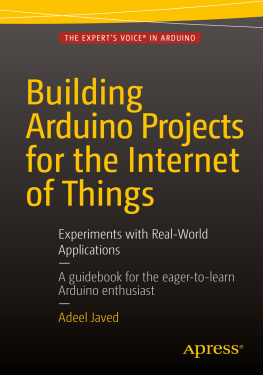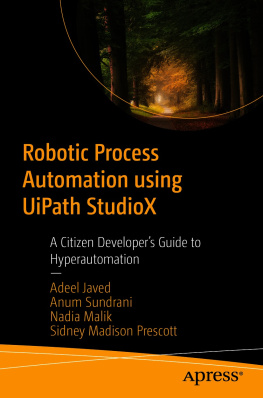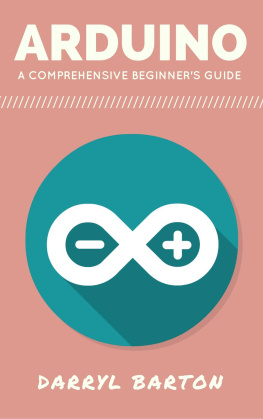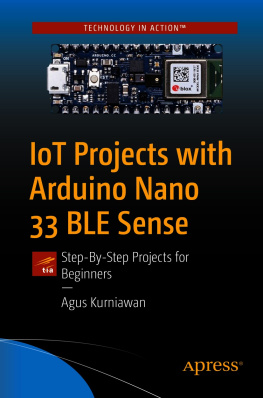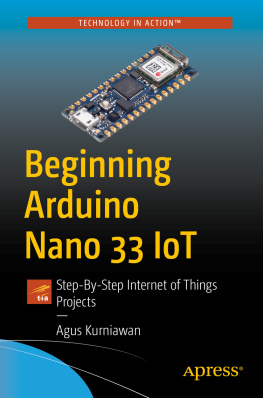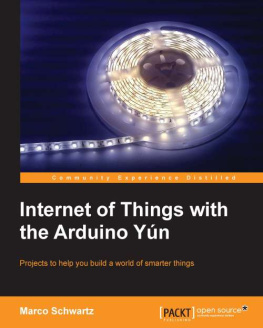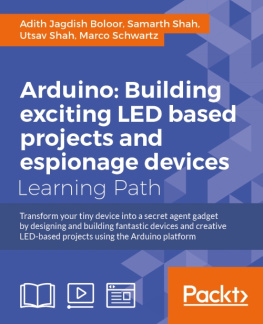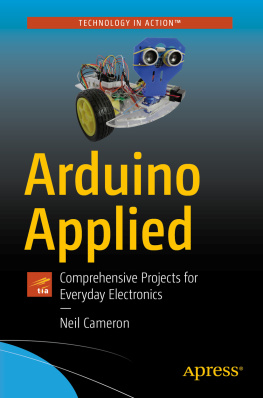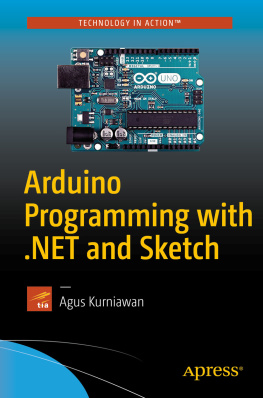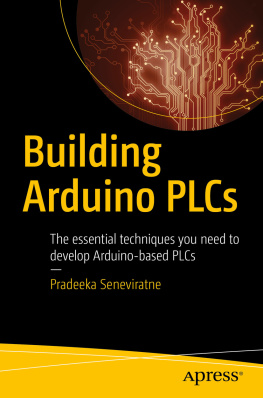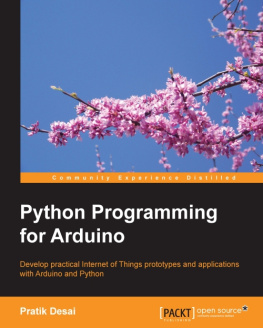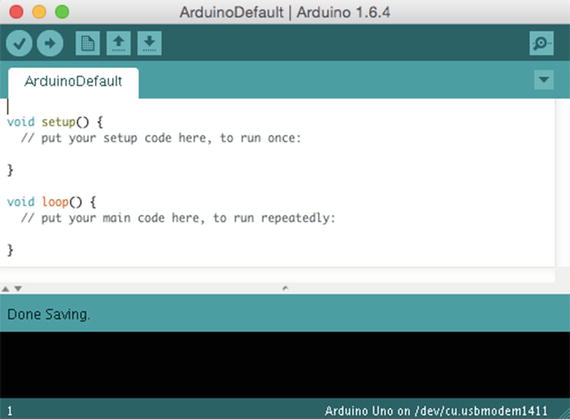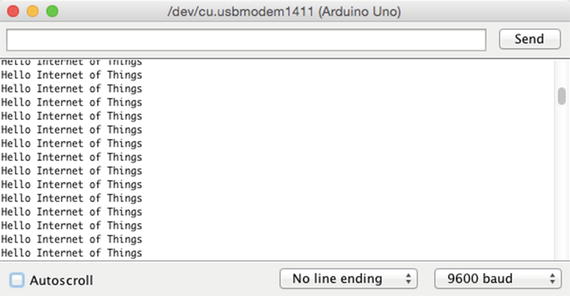Adeel Javed - Building Arduino Projects for the Internet of Things: Experiments with Real-World Applications
Here you can read online Adeel Javed - Building Arduino Projects for the Internet of Things: Experiments with Real-World Applications full text of the book (entire story) in english for free. Download pdf and epub, get meaning, cover and reviews about this ebook. year: 2016, publisher: Apress, genre: Computer. Description of the work, (preface) as well as reviews are available. Best literature library LitArk.com created for fans of good reading and offers a wide selection of genres:
Romance novel
Science fiction
Adventure
Detective
Science
History
Home and family
Prose
Art
Politics
Computer
Non-fiction
Religion
Business
Children
Humor
Choose a favorite category and find really read worthwhile books. Enjoy immersion in the world of imagination, feel the emotions of the characters or learn something new for yourself, make an fascinating discovery.
- Book:Building Arduino Projects for the Internet of Things: Experiments with Real-World Applications
- Author:
- Publisher:Apress
- Genre:
- Year:2016
- Rating:3 / 5
- Favourites:Add to favourites
- Your mark:
Building Arduino Projects for the Internet of Things: Experiments with Real-World Applications: summary, description and annotation
We offer to read an annotation, description, summary or preface (depends on what the author of the book "Building Arduino Projects for the Internet of Things: Experiments with Real-World Applications" wrote himself). If you haven't found the necessary information about the book — write in the comments, we will try to find it.
This is a book about building Arduino-powered devices for everyday use, and then connecting those devices to the Internet. If youre one of the many who have decided to build your own Arduino-powered devices for IoT applications, youve probably wished you could find a single resource--a guidebook for the eager-to-learn Arduino enthusiast--that teaches logically, methodically, and practically how the Arduino works and what you can build with it.
Building Arduino Projects for the Internet of Things: Experiments with Real-World Applications is exactly what you need. Written by a software developer and solution architect who got tired of hunting and gathering various lessons for Arduino development as he taught himself all about the topic, this book gives you an incredibly strong foundation of Arduino-based device development, from which you can go in any direction according to your specific development needs and desires.
Readers are introduced to the building blocks of IoT, and then deploy those principles to by building a variety of useful projects. Projects in the books gradually introduce the reader to key topics such as internet connectivity with Arduino, common IoT protocols, custom web visualization, and Android apps that receive sensor data on-demand and in realtime. IoT device enthusiasts of all ages will want this book by their side when developing Android-based devices.
What Youll Learn:
Connect an Arduino device to the Internet
Creating an Arduino circuit that senses temperature
Publishing data collected from an Arduino to a server and to an MQTT broker
Setting up channels in Xively
- Setting up an app in IBM Bluematrix
- Using Node-RED to define complex flows
- Publishing data visualization in a web app
- Reporting motion-sensor data through a mobile app
- Creating a remote control for house lights
- Creating a machine-to-machine communication requiring no human intervention
- Creating a location-aware device
ket= of= new= enthusiasts= all= ages= who= are= just= starting= out= with= iot= device= development.
Adeel Javed: author's other books
Who wrote Building Arduino Projects for the Internet of Things: Experiments with Real-World Applications? Find out the surname, the name of the author of the book and a list of all author's works by series.

